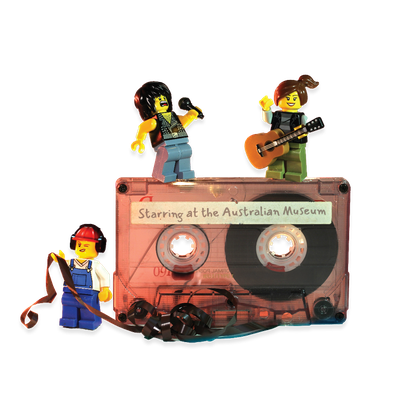Your search returned 2110 results
By Page Type
By Tag
- fish (966)
- blog (696)
- fishes of sydney harbour (401)
- First Nations (298)
- Blog (236)
- AMRI (169)
- archives (164)
- Eureka Prizes (146)
- Aboriginal and Torres Strait Islander (135)
- insect (126)
- Ichthyology (124)
- geoscience (109)
- minerals (102)
- climate change (99)
- podcast (94)
- Fish (91)
- Anthropology (89)
- International collections (80)
- Minerals Gallery (78)
- wildlife of sydney (78)
- Labridae (77)
- frog (74)
- gemstone (70)
- photography (66)
- history (63)
- Mollusca (60)
- gem (59)
- staff (59)
- Birds (56)
- Gems (56)
- Indonesia (56)
- education (55)
- shark (55)
- AMplify (54)
- people (53)
- earth sciences (50)
- exhibition (50)
- past exhibitions (50)
- Gobiidae (48)
- sustainability (46)
- Pomacentridae (45)
- Serranidae (44)
- lifelong learning (42)
- science (42)
- Earth and Environmental Science (41)
- Syngnathidae (41)
- Ancient Egypt (40)
- Bali (40)
- bird (40)
- dangerous australians (40)
-
Dr Stephen Keable
https://australian.museum/get-involved/staff-profiles/stephen-keable/Stephen Keable is Collection Manager, Marine Invertebrates at the Australian Museum.
-
Dr Jodi Rowley
https://australian.museum/get-involved/staff-profiles/jodi-rowley/Dr Jodi Rowley is a biologist with a focus on amphibian diversity, ecology and conservation, and a passion for communicating biodiversity conservation.
-
Dr Max Moulds
https://australian.museum/get-involved/staff-profiles/max-moulds/Max Moulds is a Senior Fellow, Entomology at the Australian Museum.
-
Graham Milledge
https://australian.museum/get-involved/staff-profiles/graham-milledge/Graham Milledge is a Senior Fellow, Arachnology at the Australian Museum.
-
Rose Docker
https://australian.museum/get-involved/staff-profiles/rose-docker/Rose Docker is an Archivist at the Australian Museum.
-
Corey Callaghan
https://australian.museum/get-involved/staff-profiles/corey-callaghan/Corey Callaghan's interests lie in understanding biodiversity patterns and processes at multiple scales, and how citizen science data can be used to further this understanding.
-
Adam Woods
https://australian.museum/get-involved/staff-profiles/adam-woods/Adam Woods is the DigiVol Online Coordinator, Digital Collections and Citizen Science at the Australian Museum
-
Discover more
2025 Australian Geographic Nature Photographer of the Year
Special exhibition
Free entry
Now open -
Discover more
Unfinished Business
Special exhibition
Free entry
Now open -
Discover more
Wansolmoana
Permanent exhibition
Free entry
Open daily -
Find out more
Burra
Permanent kids learning space
Free entry
10am - 4.30pm![]()
-
Discover more
Minerals
Permanent exhibition
Free entry
Open daily![]()




